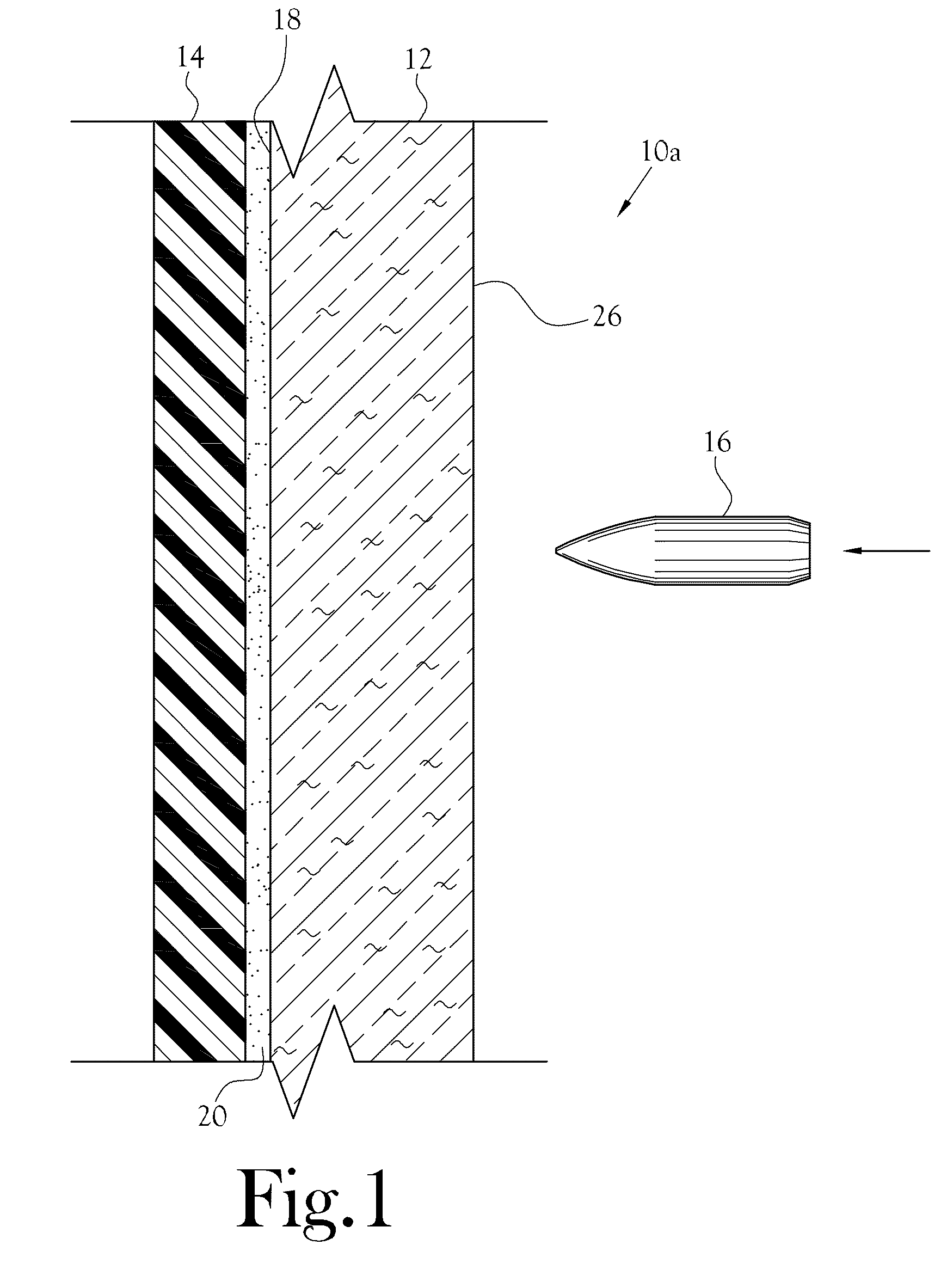Glass-ceramic with laminates
a technology of glass-ceramic and laminates, applied in the field of ballistic armor, can solve the problems of not being able to adapt to the need for transparency severely limits the material choice for the fabrication of the hard face of the transparent protective system, and the advances are not readily applicable in the field of transparent protective structures, etc., to achieve the effect of sufficient thickness and strength, sufficient thickness and strength
- Summary
- Abstract
- Description
- Claims
- Application Information
AI Technical Summary
Benefits of technology
Problems solved by technology
Method used
Image
Examples
Embodiment Construction
[0035]A transparent armor system for limiting the transfer of impact force from a projectile and corresponding method of manufacture is disclosed herein. The transparent armor system is illustrated generally at 10 in the figures. With reference to FIG. 1, one embodiment of the transparent armor system 10a includes a hard face 12 and a resilient layer 14 covering a rear surface 18 of the hard face 12 opposite an anticipated incoming projectile 16.
[0036]The hard face 12 is defined by a layer fabricated from a glass-ceramic substance having a hardness and compressive strength sufficient to substantially absorb at least a portion of the impact from an incoming projectile 16. The hard face 12 defines a front surface 26 configured to face an incoming projectile 16 and a rear surface 18 configured opposite an incoming projectile 16. It is understood that the specific type of glass-ceramic material suitable for use in the hard face 12 depends upon the mass, velocity, and impact characterist...
PUM
| Property | Measurement | Unit |
|---|---|---|
| volume fraction | aaaaa | aaaaa |
| temperatures | aaaaa | aaaaa |
| transparent | aaaaa | aaaaa |
Abstract
Description
Claims
Application Information
 Login to View More
Login to View More - R&D
- Intellectual Property
- Life Sciences
- Materials
- Tech Scout
- Unparalleled Data Quality
- Higher Quality Content
- 60% Fewer Hallucinations
Browse by: Latest US Patents, China's latest patents, Technical Efficacy Thesaurus, Application Domain, Technology Topic, Popular Technical Reports.
© 2025 PatSnap. All rights reserved.Legal|Privacy policy|Modern Slavery Act Transparency Statement|Sitemap|About US| Contact US: help@patsnap.com



